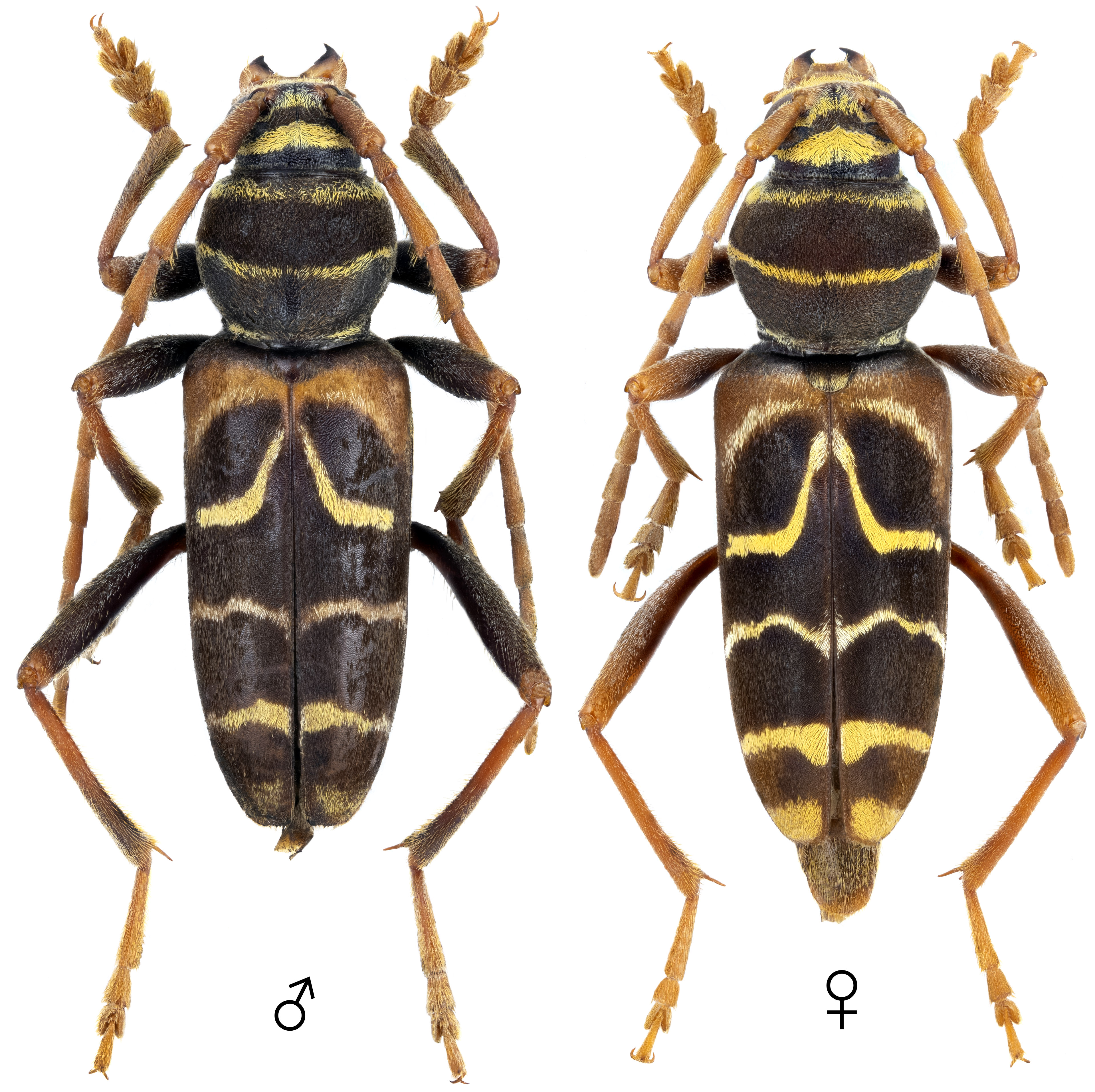[= Clytus (Plagionotus) pulcher Blessig, 1872]
Subfamilia: CERAMBYCINAE / Tribus: CLYTINI

[Photo © David Navrátil, click on the picture for 4K resolution]
Plagionotus pulcher, an East-Palaearctic forest species occuring in Russian Far East, China, Japan and Korea, has been described from Russian far East as Clytus (Plagionotus) pulcher by Constantin Blessig in 1872 [▽]. Larvae of this beautiful species develop in trunks of dying, uprooted or felled oaks. Larvae feed subcortically creating longitudinal meandering galleries compactly filled with frass from bark. Galleries, not impressed on alburnum, are created only in the bark. Mature larvae create pupal cells at the end of the gallery in bark after the second overwintering. Pupation in late spring. Adults, active from June to August, can be found on the wood of viable host trees [❖].
Body length: 15 - 20 mm Life cycle: 2 years Adults in: June - August Host plant: oaks (Quercus spp.) Distribution: Russian Far East, China, Japan, Korea
The depicted beetles were collected in Arsenyev (Арсе́ньев) environs (Primorsky krai, Far Eastern federal district, Russia) in July 1990.Collected by our friend Robert "Robin" Čermák
[▽]
Blessig C.:
Zur Kenntniss der Käferfauna Süd-Ost-Sibiriens insbesondere des Amur-Landes. Longicornia.
Horae Societatis Entomologicae Rossicae, St. Petersbourg 9 (2): 161-192, 1872. [download]
[❖]
Cherepanov A.I.:
Cerambycidae of Northern Asia, Volume 2 - Cerambycinae Part II.
Amerind Publishing, New Delhi: 354pp [pages 180-186], 1988. [download]
| Subfamilia | Cerambycinae Latreille, 1802 |
| Tribus | Clytini Mulsant, 1839 |
| Genus | Plagionotus Latreille, 1829 |
| Species | Plagionotus pulcher Blessig, 1872 |
